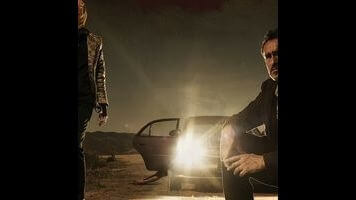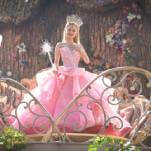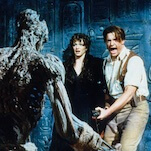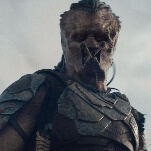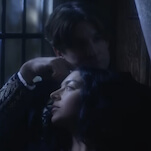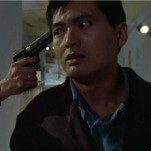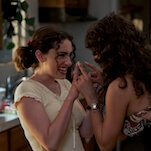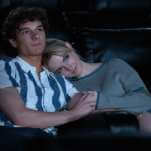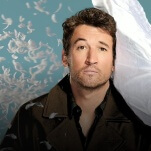After last week’s reveal, it is only fitting that “The Beetle” focuses most of its attention on Kenneth Hastings and his plan, leaving the rest of the world by the wayside. David was a great FBI agent who wanted to investigate the dead girls of Juarez but was thwarted by bureaucracy, making his mission an interesting mix of both the personal and the professional. Hastings uses a cause near and dear to his heart in order to distract from what he truly plans. It’s an interesting clue to the guy he is, rather than the one he pretends to be, like when he’s in the playground talking to Alma about his dead son Caleb. Hastings doesn’t hide behind the façade, he tells Alma the truth. Just like the opening, these truths humanize Hastings; they make him a real person and not just a villain. While it’s clear Hastings has spent the past few years ensuring Marco gets his comeuppance, he’s still a shattered father and a broken man at heart. “I was mad at the world,” Hastings tells Alma. That raw vulnerability and all of those niceties toward Alma have paid off and she allows Hastings to whisk her and her children away to a remote cabin where she becomes bait to distract Marco from the true plot at hand: kidnapping Gus. I understand that Alma is vulnerable and all but, girl, I have to say it: That was dumb. Watching Alma and her kids approach the cabin is like watching a horror movie where I wanted to tell the ingenue not to go up the stairs.
While “The Beetle” has these tense moments, there’s a bit of air let out of the central mystery now that we know who the Beast is. I was not on the edge of my seat waiting for Alma to be saved at the last minute. With all due respect to Catalina Sandino Moreno, who I’ve thoroughly enjoyed as Alma, this didn’t feel like the end for her. Just as Sonya realizes right before Hastings hits her car that something doesn’t make sense, that’s how I felt while Alma clutched the grenade. Maybe it was because I didn’t buy that a strong woman like Alma, one with the fortitude to kick her husband out of their shared home while she is pregnant, would feel the need to put her utter trust into a man she may think she knows, but whom she has only recently entered into a relationship with.
The Linder and Charlotte Millwright plots feel more out of step with the main story than usual. But they too, have their own dualities to contend with. Each character deals with choice in the death of their antagonist. “I had no choice,” both Cesar and Linder say about their respective kills. They had to do it. The same could be said for Charlotte. In her view, she had to kill Graciela in order to save Cesar. Linder’s ranch-dwelling friend agrees. Sometimes bad men deserve to die. I never considered the parallels between Linder and Charlotte until this episode, although their class and life stations make them diametric opposites, much like Sonya and Marco. I always thought of their “Other” as their Mexican counterparts: Graciela for Charlotte and Fausto for Linder. But Linder and Charlotte’s parallels are growing, and since the bigger mystery has largely been solved, I’m interested to see how this one unravels. “Not everything is black and white,” Marco tells Sonya when she tries to figure out why he committed adultery with Hastings’ wife. But Charlotte, Cesar, and Linder see their decisions in a starker light.
Stray observations:
- I miss Daniel Frye and Adriana. Like Linder and Charlotte, I look forward to seeing them wrapped back up into the plot. Cesar knows a lot about covering up murder.
- I’m interested to see what commenters have to say about Sonya questioning Marco about what it’s like to sleep in the same bed with the same person every night. I know there were complaints when Sonya would act as if she had never had any socialization before, but that quality had been tamped down as of late. (This is a resurgence of the “Hey, guys! Over here! This character is on the spectrum!” shouting that I know you guys were not such fans of.)
- “Let’s discuss this over a ham salad… After my first kill, I couldn’t get enough cheeseburgers.” Who the hell is this guy and can we have a show about him?
